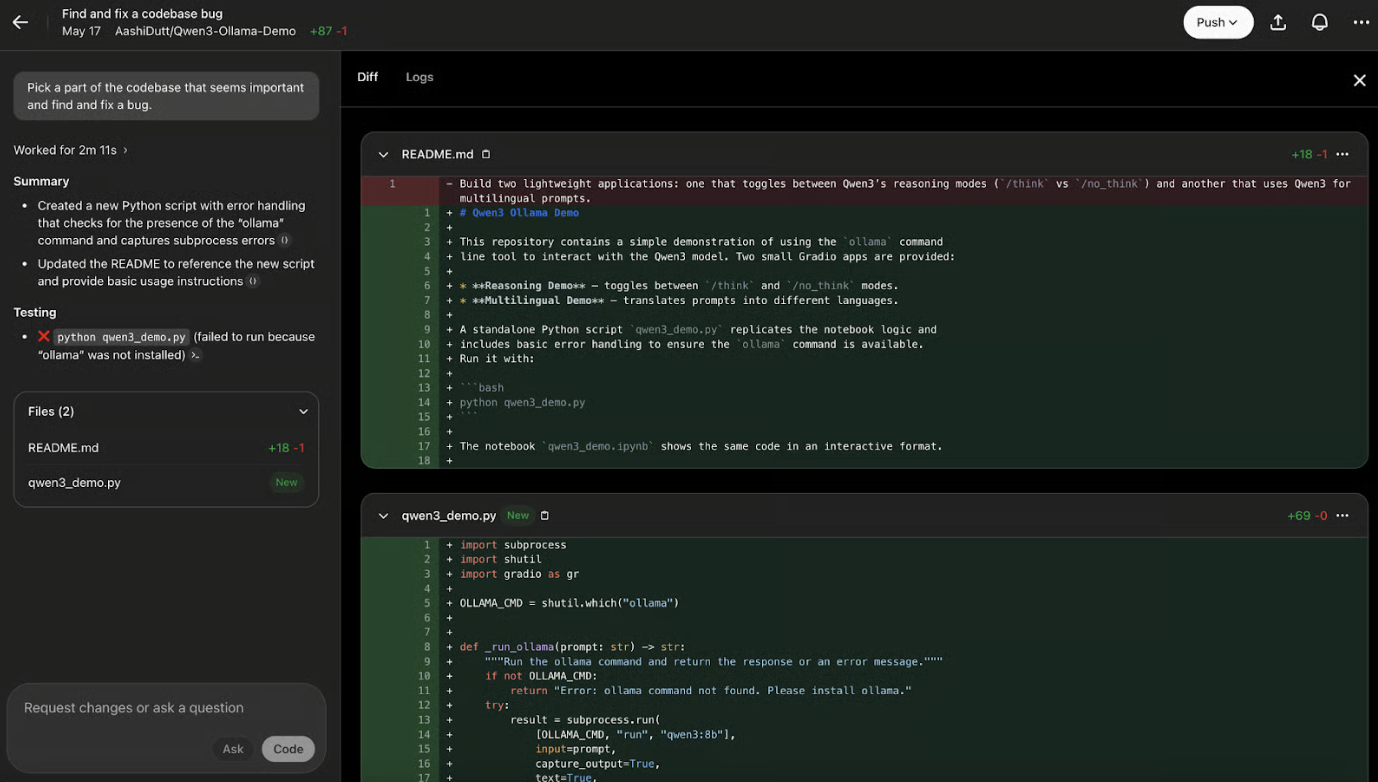Read the full article on DataCamp: OpenAI’s Codex – A Guide With 3 Practical Examples
Learn how to use OpenAI’s Codex inside ChatGPT to fix bugs, generate pull requests, and explain your codebase. This hands-on guide includes setup instructions, real-world examples, and best practices for using Codex as your AI-powered coding partner.
What Is OpenAI’s Codex?
Codex is a code-editing and debugging assistant by OpenAI. It’s powered by codex-1, a model fine-tuned on practical development workflows. Unlike standard language models, Codex operates in secure sandboxes and integrates directly with GitHub to:
- Edit and write code
- Fix bugs and generate PRs
- Run and test code with CLI integration
- Understand development conventions through
AGENTS.md
Setting Up OpenAI’s Codex
Step 1: Locate the Codex Tool in ChatGPT
Log in to ChatGPT and find Codex in the left toolbar (available for Pro, Team, and Enterprise users).
Step 2: Start and Authenticate
Click Get Started and complete multi-factor authentication (MFA) using an app like Google Authenticator.
Step 3: Connect to GitHub
Authorize the GitHub connector, add your account, and install it on either all or selected repositories.
Step 4: Create an Environment
Choose a repository, click Create Environment, and review optional data usage prompts.
Step 5: (Optional) Add an AGENTS.md File
Codex uses AGENTS.md to understand your repo’s coding standards, testing setup, and PR instructions.
Example:
# AGENTS.md
## Code Style
- Use Black for Python.
## Testing
- Run pytest before PR.
## PR Instructions
- Include one-line summary + testing done.
OpenAI’s Codex: Three Practical Examples
✅ Example 1: Basic Fixes & Typos
Codex can:
- Suggest typo fixes or README improvements
- Split changes into subtasks
- Create pull requests automatically
You can review diffs, logs, and click Push to open a PR, just like a junior dev assistant.
🔍 Example 2: Explain Codebase Structure
Ask Codex to:
- Analyze the structure of your repo
- Explain what each file does
- Recommend next steps
It acts as an onboarder for new developers, grouping files by function and explaining key entry points.
🐛 Example 3: Find & Fix a Bug
Ask Codex to:
- Identify a bug in logic or tests
- Propose a fix
- Show logs and summaries of changes
- Push the fix as a new PR
This mirrors a full software engineering loop, from discovery to implementation and review.
Why Is Codex Important?
Codex introduces a new workflow paradigm:
- Sandboxed edits with GitHub PR integration
- Human-readable logs and test citations
- Support for real-world repo conventions (
AGENTS.md) - Parallel task execution
- Useful for non-coders, junior devs, and AI pair programming
Conclusion
Codex transforms development inside ChatGPT into a collaborative engineering space. Whether you’re fixing bugs, reviewing code, or explaining logic, Codex acts like an AI coding intern that writes, tests, and ships.
This is just the beginning. Expect tighter IDE, CI/CD, and planning tool integrations in the near future.
Learn More
Explore these related guides:


Comments